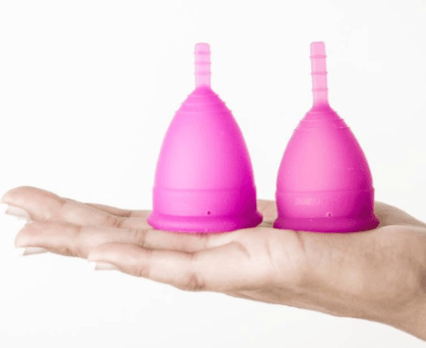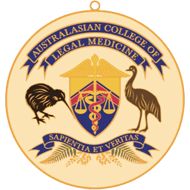Menstrual Cups and Toxic Shock
)
Menstrual cups are flexible silicone or rubber cups which are applied to the upper vaginal fornices to collect menstrual blood. They are increasingly being used as a more environmentally-friendly alternative to tampons. They are intended for re-use and can last for upwards of 10 years. Whereas the monthly cost of tampons is ~$10 (before the lifting of GST soon) a menstrual cup costs between $35-50.
At a recent tutorial at WSU I found that 50% of the women students preferred a menstrual cup to tampons. This may be a cost issue but other reasons include a belief that menstrual cups are safer. That is not correct.
Toxic shock syndrome has been recently described in a woman using a menstrual cup. The woman described sustaining a small abrasion during insertion and 7 days later developed abnormal bleeding with a brown discharge followed 2 days later by a purulent discharge and fever. Over the next 24 hours she became hypotensive with a tachycardia and high fever. She was treated with IV clindamycin. She developed a generalized morbilliform rash.
Toxic shock syndrome is now rarely seen however it was described in 1980 in the Lancet and the 2 main risk factors were the use of high-absorbency tampons and prolonged, continual usage.
The classic causative organism was Staph aureus although Streptococcus can also cause toxic shock syndrome.
Common risks
This common risk of tampons and menstrual cups may depend on the following features of menstrual cups:
- Accumulation of blood in the silicone material.
- Increased vaginal pH with use of cups.
- Presence of O2 and CO2 in vagina during the use of menstrual cups.
Because of accumulation of blood, menstrual cups appear to provide a medium for bacterial growth with the same three conditions mentioned above. Menstrual blood emanating from the uterus is sufficient to promote the growth of S. aureus in the lower genital tract.
The current incidence of toxic shock syndrome is 1:100,000.
High placement of a contaminated cup, an abundant volume of menstrual blood and mucosal irritation within the vagina may be considered as other probable contributing factors.
The very real reduction in toxic shock with tampons over the past 20 years can be mainly attributed to changes in the absorbency and composition of tampons available to the consumer. The removal of the RelyTM brand in the US which featured high absorbency was an important improvement in safety.
Toxic shock is well named as it is caused by an exotoxin (toxin 1 :TSST-1) released from Staph aureus.
Advice about the use of menstrual cups:
- Use for no more than 6-8 hours at a time (the volume capacity is 30 mls).
- Don't leave a menstrual cup in situ overnight.
- Wash cup carefully between uses (however this may not be sufficient for asepsis).
- Wash hands carefully before insertion.
- If the patient develops a fever, a rash or syncope then urgent medical attention should be sought.
Further reading:
- Mitchell MA,Bisch S,Arntfield S,Hosseini-Moghaddam S A confirmed case of toxic shock syndrome associated with the use of a menstrual cup Can J Infect Dis Med Microbiol. 2015 Jul-Aug; 26(4): 218220.
- Schuchat A, Broome CV.Toxic shock syndrome and tampons Epidemiol Rev. 1991;13:99-112.
- Helgerson SD. Toxic-shock syndrome: tampons, toxins, and time: the evolution of understanding an illness.Women Health. 1981 Fall-Winter;6(3-4):93-104.
- Bonventre PF1, Heeg H, Cullen C, Lian CJ. Toxicity of recombinant toxic shock syndrome toxin 1 and mutant toxins produced by Staphylococcus aureus in a rabbit infection model of toxic shock syndrome.Infect Immun. 1993 Mar;61(3):793-9.
| Tags:Obstetrcis |








